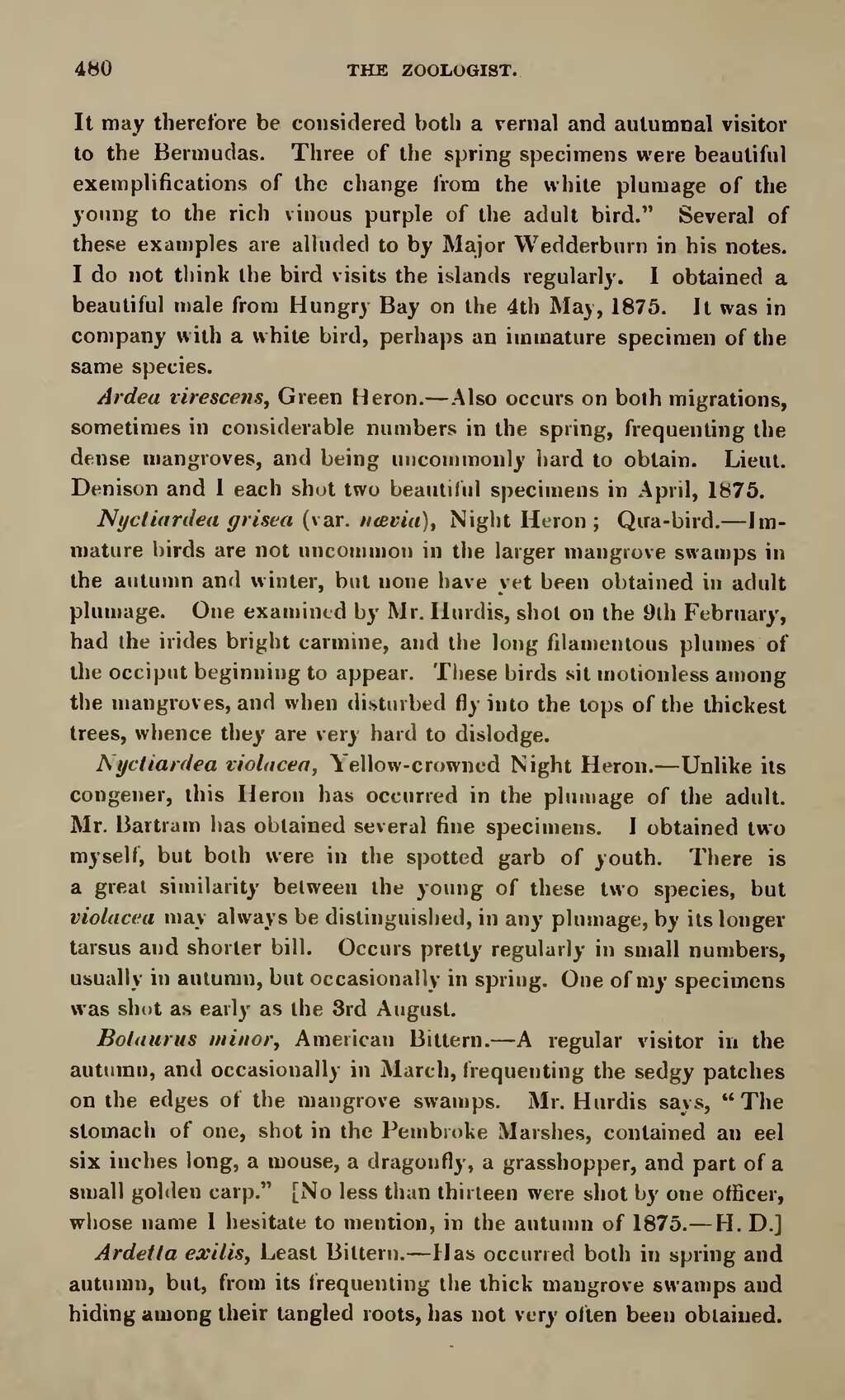It may therefore be considered both a vernal and autumnal visitor to the Bermudas. Three of the spring specimens were beautiful exemplifications of the change from the white plumage of the young to the rich vinous purple of the adult bird." Several of these examples are alluded to by Major Wedderburn in his notes. I do not think the bird visits the islands regularly. I obtained a beautiful male from Hungry Bay on the 4th May, 1875. It was in company with a white bird, perhaps an immature specimen of the same species.
Ardea virescens, Green Heron.—Also occurs on both migrations, sometimes in considerable numbers in the spring, frequenting the dense mangroves, and being uncommonly hard to obtain. Lieut. Denison and I each shot two beautiful specimens in April, 1875.
Nyctiardea grisea (var. nævia), Night Heron; Qua-bird.—immature birds are not uncommon in the larger mangrove swamps in the autumn and winter, but none have yet been obtained in adult plumage. One examined by Mr. Hurdis, shot on the 9lh February, had the irides bright carmine, and the long filamentous plumes of the occiput beginning to appear. These birds sit motionless among the mangroves, and when disturbed fly into the tops of the thickest trees, whence they are very hard to dislodge.
Nyctiardea violacea, Yellow-crowned Night Heron.—Unlike its congener, this Heron has occurred in the plumage of the adult. Mr. Bartram has obtained several fine specimens. I obtained two myself, but both were in the spotted garb of youth. There is a great similarity between the young of these two species, but violacea may always be distinguished, in any plumage, by its longer tarsus and shorter bill. Occurs pretty regularly in small numbers, usually in autumn, but occasionally in spring. One of my specimens was shot as early as the 3rd August.
Botaurus minor, American Bittern.—A regular visitor in the autumn, and occasionally in March, frequenting the sedgy patches on the edges of the mangrove swamps. Mr. Hurdis says, "The stomach of one, shot in the Pembroke Marshes, contained an eel six inches long, a mouse, a dragonfly, a grasshopper, and part of a small golden carp." [No less than thirteen were shot by one officer, whose name I hesitate to mention, in the autumn of 1875.—H.D.]
Ardetta exilis, Least Bittern.—Has occurred both in spring and autumn, but, from its frequenting the thick mangrove swamps and hiding among their tangled roots, has not very often been obtained.
